 August 1, 2019 John E. Ross, KD8IDJ, Editor
| ||||||||
Free Hiram Percy Maxim 150th Birthday Event Logging Software Now Available Scott Davis, N3FJP, perhaps best known for the ARRL Field Day software that bears his call sign, has developed a free logging program for ARRL's Happy 150! Hiram Percy Maxim Birthday Celebration on-the-air event that gets under way on August 31 and runs for 9 days. Davis calls his software Hiram Percy Maxim Contest Log 1.0. Maxim, 1AW, who cofounded ARRL, was born on September 2, 1869.
The Happy 150! event will begin at 0000 UTC on August 31 and continue until 2359 UTC on September 8. It is open to all radio amateurs. The goal is straightforward: Contact as many participating stations as possible. W1AW and all ARRL members will append "/150" to their call signs during this event (DX operators who are ARRL members may operate as <call sign>/150, if permitted by their country of license.) Participating stations will exchange a signal report and ARRL/RAC Section. DX stations will send a signal report and "DX." All Amateur Radio bands except 60, 30, 17, and 12 meters are available. Permitted modes are CW, any voice mode, and digital. Davis said Hiram Percy Maxim Contest Log 1.0 is full featured and "very easy and intuitive to use." "If the Hiram Percy Maxim celebration is received as strongly as it appears, my hope is that ARRL will decide to make this an annual event," Davis allowed. "After all, birthdays come once a year, and we now have the infrastructure to continue." One Dead, One Injured in New Hampshire Ham Radio Tower Mishap A tower dismantling turned tragic on Saturday, July 27, in Deerfield, New Hampshire, when two radio amateurs working some 40 feet up on the tower were carried to the ground when the structure collapsed. Joseph Areyzaga, K1JGA, 52, of Goffstown, New Hampshire, did not survive injuries sustained in the fall, while the tower's owner, Michael Rancourt, K1EEE, 65, was seriously injured and remains
hospitalized. Rancourt was taking down the tower in preparation for selling his house, and the pair had nearly completed their work. They were tied into the tower and went down with it as it collapsed. The tower, a tilt-over model said to be 40 to 50 feet, had been bolted to prevent it from tilting as it was being dismantled. A law enforcement source said a number of people were at the site for a social gathering as the tower was being taken down, and they witnessed the tragedy. No official determination has been made regarding the cause of the structural failure, but a radio amateur who visited the scene afterward observed that two of the tower's three legs were clearly compromised and split cleanly and the third leg bent, just above the fully intact tilt base. The New Hampshire Amateur Radio tower-related fatality is the second such deadly incident in a little more than 6 weeks. In mid-June, a Pennsylvania radio amateur died when the tower he was installing collapsed as he was attempting to attach a guy line to the structure's bottom section. DXpedition Team Donates Part of QSL Fees to Galapagos Conservancy From February 28 until March 6, the HD8M Amateur Radio team operated from the side of Cerro Crocker, a volcano high above the city of Bellavista on Santa Cruz Island in the Galapagos. The HD8M team consisted of Jim Millner, WB2REM, a retired psychologist, and Bill Mims, W2WCM, a retired airline pilot. The purpose of the operation was to bring attention to the fragile ecosystem of the Galapagos Islands through their Amateur Radio activity. As a part of the confirmation process, the team exchanged QSL cards from which a dollar or more would be donated to Galapagos Conservancy.
"We used ClubLog's Online QSL Request System (OQRS), bureau requests associated with ClubLog, and SASEs for QSLing," Millner explained. "When stations used OQRS and requested a direct QSL Card, they were charged a $4 fee. We mentioned in the OQRS system that of every $4 received, were going to donate $1 to the Galapagos Conservancy. As it turned out, however, we donated all extra money to the Conservancy." At the time, the HD8M team was the only Amateur Radio operation in the Galapagos Islands, making it a rare entity, so they found themselves in high demand. In just 6 days of operation, they contacted more than 8,000 stations in 140 DXCC entities as well as in all 50 US states. Millner and Mims operated two stations equipped with Icom IC-7300s and band-pass filters, operating on SSB, CW, and FT8, and using all wire antennas. HD8M took part in the ARRL International DX Phone and, despite poor conditions on the equator, they were able to make more than 600 contacts. "FT8 was a particularly a good mode despite the conditions," Millner said, noting that the location at 1,500 feet elevation on the side of a volcano gave the pair "an amazing view" of the ocean and outlying islands. "The wildlife was abundant with many colorful birds and land iguanas, as well as huge Galapagos tortoises that roamed around the 10-acre property.
The Doctor Will See You Now! "Noise Blankers and Noise Reduction" is the topic of the new (August 1) episode of the ARRL The Doctor is In podcast. Listen...and learn!
Every 2 weeks, your host, QST Editor-in-Chief Steve Ford, WB8IMY, and the Doctor himself, Joel Hallas, W1ZR, will discuss a broad range of technical topics. You can also email your questions to [email protected], and the Doctor may answer them in a future podcast. Enjoy ARRL The Doctor is In on Apple iTunes, or by using your iPhone or iPad podcast app (just search for ARRL The Doctor is In). You can also listen online at Blubrry, or at Stitcher (free registration required, or browse the site as a guest) and through the free Stitcher app for iOS, Kindle, or Android devices. If you've never listened to a podcast before, download our beginner's guide. ARISS Next-Generation Radio System Completes Critical Flight Certification Tests The Amateur Radio on the International Space Station (ARISS) next-generation Interoperable Radio System (IORS) successfully The IORS also successfully passed power quality and acoustics testing, which verified that the ARISS IORS will not introduce harmful signals back into the ISS power system and is quiet enough to meet ISS acoustic requirements. ARISS Hardware Team members Lou McFadin, W5DID, and Kerry Banke, N6IZW, were at NASA's Johnson Space Center to support the 2-week battery of tests in concert with the NASA test and certification team.
"Since the IORS is being qualified to operate on 120 V dc, 28 V dc, and Russian 28 V dc, as well as transmit on VHF or UHF, a lot of test combinations were required to cover all cases," Banke said. "Each input voltage type was also tested at low, medium, and high line voltage. Moreover, additional permutations were required to test the IORS under no load, medium load, and full load at each voltage level. So it should not be surprising why the tests took 2 weeks to complete." Successful completion of these tests represents a key milestone in preparing the IORS for launch. ARISS says it now can begin final assembly of the flight units and prepare for their safety certification before launch. ARISS is working toward launch-ready status by year's end. Dhruv Rebba, KC9ZJX, is 2019 Newsline Young Ham of the Year Fifteen-year-old ARRL member Dhruv Rebba, KC9ZJX, of Normal, Illinois, has been selected as the 2019 Bill Pasternak, WA6ITF, Memorial Amateur Radio Newsline Young Ham of the Year (YHOTY). His parents are Hari Rebba, VU2SPZ, and Shailaja Panyam. A rising sophomore at the Normal Community High School, Dhruv is a member of the Central Illinois Radio Club. He has been licensed since 2013, after a visit to Dayton Hamvention® with his dad sparked his interest in Amateur Radio.
After getting his license, Dhruv became involved in ARRL Field Day and public service events with the Central Illinois Radio Club, including the We Care Twin Cities Half Marathon and the Hop on for Hope Bike Ride/Walk. Dhruv says he found a way to combine his interest in space and engineering with his new hobby, joining AMSAT and pursuing his dream of a school contact with an astronaut aboard the International Space Station. In October 2017, he served as lead control operator for an Amateur Radio on the International Space Station (ARISS) contact with students at his school, Chiddix Junior High, who spoke to astronaut Joe Acaba, KE5DAR. On July 27 of this year, Dhruv helped to facilitate another ARISS contact with Scouts attending the World Scout Jamboree in West Virginia. ARISS presentations at Dayton and Huntsville, Dhruv's selection as an ARISS mentor, and networking with those putting together the ARISS contact for the World Scout Jamboree led to his involvement in the July 27 contact.
Dhruv has earned many accolades for his Amateur Radio pursuits, including the Young Ham Lends a Hand Award at the 2019 Dayton Hamvention Youth Forum; a Presidential Award from AMSAT, and the Radio Club of America Young Achiever Award. He also has traveled to India to promote Amateur Radio awareness. The Young Ham of the Year was established in 1986 by Amateur Radio Newsline cofounder Bill Pasternak, WA6ITF (SK), in 1986. Dhruv will receive the 2019 YHOTY award during the Huntsville Hamfest on August 17. Read more. -- Thanks to Amateur Radio Newsline The K7RA Solar Update Tad Cook, K7RA, Seattle, reports: No sunspots were observed over the past week, and solar flux remains flat, with average daily values declining from 67.3 to 67. The average daily planetary A index edged down slightly, from 5.3 to 5, and the middle latitude A index dipped from 6.3 to 5.9. Predicted solar flux for the August 1 - September 14 is 67 -- every day. Predicted planetary A index is10, 8, 5, and 5 on August 1 - 4; 8, 16, 12, and 8 on August 5 - 8; 5 on August 9 - 16; 8 on August 17 - 18; 5 on August 19 - 26; 8, 16, 8, 5, 8, 22, and 16 on August 27 - September 2; 5 on September 3 - 12, and 8 on September 13 - 14.
Sunspot numbers for July 25 - 31, 2019 were 0, 0, 0, 0, 0, 0, and 0, with a mean of 0. The 10.7-centimeter flux was 68.2, 67.6, 66.7, 67.1, 66.1, 66.2, and 66.9, with a mean of 67. Estimated planetary A indices were 3, 3, 4, 4, 5, 8, and 8 with a mean of 5. Middle latitude A index was 3, 4, 4, 7, 5, 8, and 10, with a mean of 5.9. A comprehensive K7RA Solar Update is posted Fridays on the ARRL website. For more information concerning radio propagation, visit the ARRL Technical Information Service, read "What the Numbers Mean...," and check out K9LA's Propagation Page. A propagation bulletin archive is available. Monthly charts offer propagation projections between the US and a dozen DX locations. Share your reports and observations. Just Ahead in Radiosport
See the ARRL Contest Calendar for more information. For in-depth reporting on Amateur Radio contesting, subscribe to The ARRL Contest Update via your ARRL member profile email preferences. AMSAT President Asks Members to Help Keep Amateur Radio in Space "It takes considerable volunteer effort and real dollars to keep Amateur Radio in Spac," AMSAT President Joe Spier, K6WAO, has reminded the organization's members in a message that included an "AMSAT has several fundraising needs," Spier said, noting that contributions to AMSAT are tax deductible to the extent permitted by IRS rules. "The daily operation of AMSAT is accomplished by donations to the General Fund. The other main department needs are the fund for GOLF 3U CubeSats design/construction and Amateur Radio on the International Space Station (ARISS)."
Spier pointed to the 2018 successes of AO-92 (Fox-1D) and the launch of AO-95 (Fox-1Cliff). "AMSAT partnered with Spaceflight Inc. by contracting and paying for these launches," Spier noted. "Fundraising for Fox-series satellites has not yet recouped this expenditure, so donations are still being accepted." AMSAT expects to launch of RadFxSat-2 (Fox-1E), in partnership with Vanderbilt University, by the end of summer. AMSAT is also partnering with several universities to fly the same linear transponder on their CubeSats. AMSAT has been selected for two CubeSat Launch Initiative (CSLI) opportunities for GOLF-TEE and GOLF-1. "GOLF's 3U spaceframe is being designed with versatility to add mission-specific radios, power supplies, and experiments," Spier noted. "A series of GOLF CubeSats will provide better coverage, and a greater footprint will allow more coverage by fewer satellites." One-time or recurring donations to AMSAT and ARISS are welcome. Read more. IEEE Microwave Theory and Techniques Society Seeks Student CubeSat RF Hardware Proposals The IEEE Microwave Theory and Techniques Society (MTT-S) has announced the MTT-Sat Challenge for groups of students developing RF hardware for CubeSat applications. The MTT-Sat Challenge is a worldwide competition for teams of undergraduate and graduate students to design and build RF hardware for small satellites. The most promising designs will undergo space environmental qualification testing and could be incorporated into an actual CubeSat.
At this time, the IEEE MTT-Sat Challenge is calling for ideas that could come from among the following fields: Transceivers based on commercial of the shelf (COTS) components; antenna systems and arrays for CubeSats; ground terminals for low-earth orbit (LEO) satellites; radiation-hardened electronics based on COTS components; inter-satellite communication; electromagnetic sensors for CubeSats, and novel RF technologies for space applications. Detailed information is available on the MTT-Sat Challenge. The submission deadline is October 2, 2019, 0900 UTC (October 1, 11 PM HST). Those planning to submit proposals should send a brief letter of interest by August 31. Cass Award Winners Announced
Janusz Wegrzyn, SP9FIH, has been named the winner of the 2018 Single-Operator Cass Award for the second year in a row. While active from Sint Eustatius Island as PJ5/SP9FIH in March 2018, Wegryzn contacted 8,257 unique stations during the 14 days of his one-person DXpedition. The 3C0W Annobon Island DXpedition team was the recipient of the first Unlimited Cass Award for its effort in
logging as many DXers as possible. During March 2018, Girts Budis, YL2KL; Yuris Petersons, YL2GM, and Kaspars Uztics, YL1ZF, contacted 18,812 unique call signs on the DXpedition. Sponsored by Club Log, DXLab, and the Northern California DX Club, the annual Cass Awards encourage DXpedition operating excellence by recognizing DXpeditions that contact the greatest number of unique call signs. Running leaderboards for the 2019 Cass Single-Operator and Unlimited awards are available on the Club Log website. These awards honor the wisdom and spirit of Cass Cassidy, WA6AUD (SK), whose weekly stories in the West Coast DX Bulletin, published from 1968 to 1979, engaged a generation of DXers. In Brief...
Upcoming ARRL Section, State, and Division Conventions
Find conventions and hamfests in your area.
. .
Subscribe to...
Free of charge to ARRL members...
| ||||||||
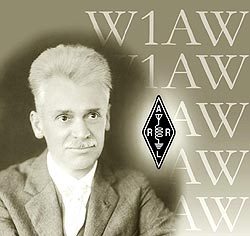 "I've never created a program for a non-recurring event before, because the coding time required is too large," Davis said in a post to the N3FJP software user group. "I've made this exception because this is a really nice, simple rule set with the very popular field day-style exchange that has the added bonus in schedule flexibility of running for 9 days. The Hiram Percy Maxim celebration sure looks like a well-designed event that will be a lot of fun for us all."
"I've never created a program for a non-recurring event before, because the coding time required is too large," Davis said in a post to the N3FJP software user group. "I've made this exception because this is a really nice, simple rule set with the very popular field day-style exchange that has the added bonus in schedule flexibility of running for 9 days. The Hiram Percy Maxim celebration sure looks like a well-designed event that will be a lot of fun for us all."
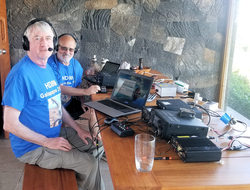
 In addition, they added a fundraising component to their outreach and on their
In addition, they added a fundraising component to their outreach and on their 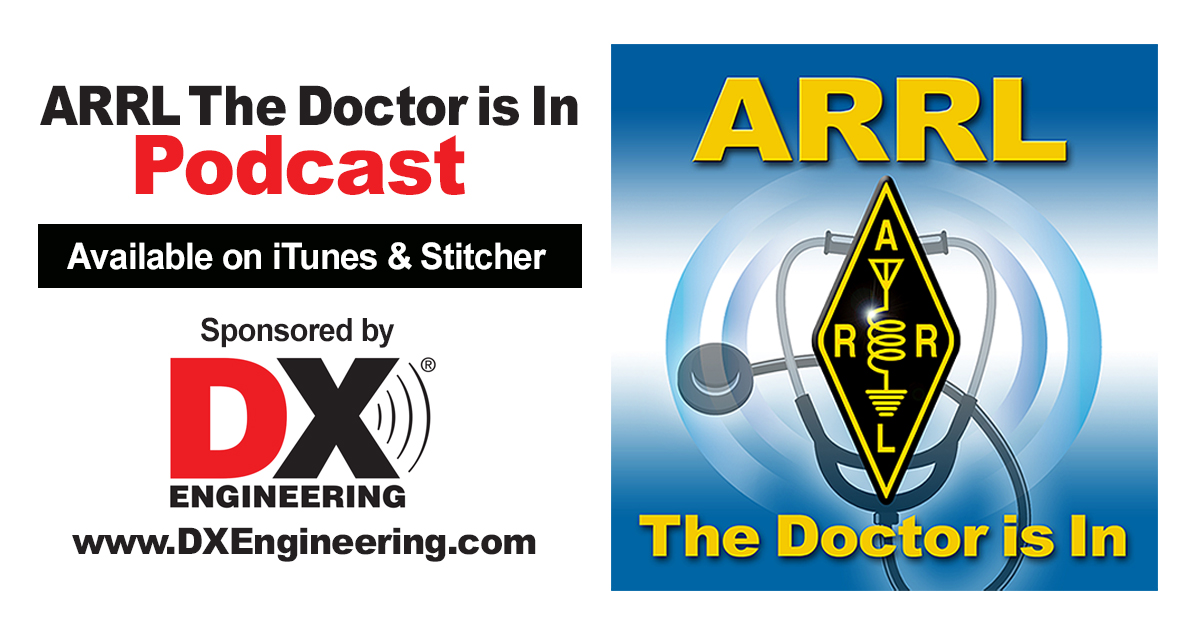 Sponsored by
Sponsored by 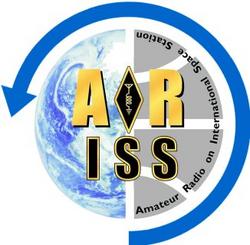 completed a battery of stress tests, required as part of the final certification of the hardware for launch to and operation on the International Space Station (ISS). The IORS consists of a JVC Kenwood D710GA transceiver and the AMSAT-developed Multi-Voltage Power Supply (MVPS). In early July, the equipment successfully completed a series of electromagnetic interference/electromagnetic compatibility (EMC) tests to ensure that the ARISS hardware will not interfere with ISS systems or other payloads.
completed a battery of stress tests, required as part of the final certification of the hardware for launch to and operation on the International Space Station (ISS). The IORS consists of a JVC Kenwood D710GA transceiver and the AMSAT-developed Multi-Voltage Power Supply (MVPS). In early July, the equipment successfully completed a series of electromagnetic interference/electromagnetic compatibility (EMC) tests to ensure that the ARISS hardware will not interfere with ISS systems or other payloads..jpeg)
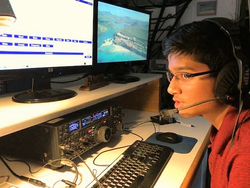
.jpg) In 2018, Dhruv was selected to take part in the Dave Kalter Memorial Youth DX Adventure. He traveled to Curacao last summer, where the PJ2Y team logged a record 6,262 contacts with 135 entities. His favorite mode is SSB.
In 2018, Dhruv was selected to take part in the Dave Kalter Memorial Youth DX Adventure. He traveled to Curacao last summer, where the PJ2Y team logged a record 6,262 contacts with 135 entities. His favorite mode is SSB.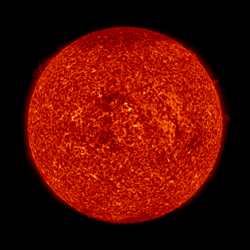 George, N2CG, in Saddle Brook, New Jersey, wrote to report that on July 28, 6 meters opened to northern Europe -- mainly Finland -- with very good FT8 signals for more than an hour. "This was my very first time working Finland on 6 meters, and shortly after my QSO with OH3SR, he verified our QSO on LoTW!" he wrote.
George, N2CG, in Saddle Brook, New Jersey, wrote to report that on July 28, 6 meters opened to northern Europe -- mainly Finland -- with very good FT8 signals for more than an hour. "This was my very first time working Finland on 6 meters, and shortly after my QSO with OH3SR, he verified our QSO on LoTW!" he wrote.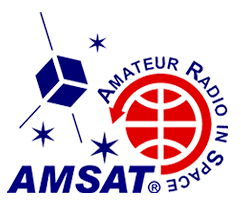 invitation to the organization's 50th anniversary
invitation to the organization's 50th anniversary 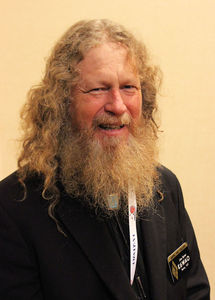
 "The main goal of the MTT-Sat Challenge is to advance space RF and microwave education, inspire students to pursue science and engineering education and careers, and prepare tomorrow's leaders with the interdisciplinary teamwork skills, which are necessary for success," the society said in announcing the competition. The MTT-Sat Challenge is intended to run over 4 academic years (starting in June 2019) and is divided into several phases spanning overall technology readiness levels. Proposals may be submitted for every phase.
"The main goal of the MTT-Sat Challenge is to advance space RF and microwave education, inspire students to pursue science and engineering education and careers, and prepare tomorrow's leaders with the interdisciplinary teamwork skills, which are necessary for success," the society said in announcing the competition. The MTT-Sat Challenge is intended to run over 4 academic years (starting in June 2019) and is divided into several phases spanning overall technology readiness levels. Proposals may be submitted for every phase.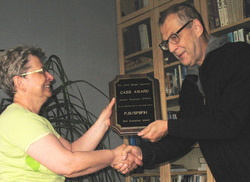

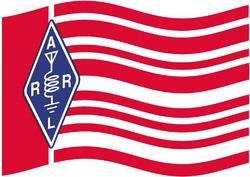 Ham radio volunteers assisted in the search for a missing teen this week. Many radio amateurs were among the fire and police department personnel, search-and-rescue teams, and citizen volunteers who took part in the July 29 search in Sinking Springs, Pennsylvania, for a 13-year-old youth with autism who was missing from his home. Hams served as leads for volunteer search teams, and ham radio provided solid communication with searchers. "We started the operation [at] about 1300 UTC, and he was located about 1900 UTC, safe," said Ralph Brandt, K3HQI. "Ham radio played a significant part in this." Brandt and Yvonne Roberts, AC3CM, handled communications during the search. Brandt said that about 25 of the radio amateurs taking part had been students in his Technician licensing classes. "It gives a good feeling when it works," said Brandt, who is the Affiliated Club Coordinator in the ARRL Eastern Pennsylvania Section.
Ham radio volunteers assisted in the search for a missing teen this week. Many radio amateurs were among the fire and police department personnel, search-and-rescue teams, and citizen volunteers who took part in the July 29 search in Sinking Springs, Pennsylvania, for a 13-year-old youth with autism who was missing from his home. Hams served as leads for volunteer search teams, and ham radio provided solid communication with searchers. "We started the operation [at] about 1300 UTC, and he was located about 1900 UTC, safe," said Ralph Brandt, K3HQI. "Ham radio played a significant part in this." Brandt and Yvonne Roberts, AC3CM, handled communications during the search. Brandt said that about 25 of the radio amateurs taking part had been students in his Technician licensing classes. "It gives a good feeling when it works," said Brandt, who is the Affiliated Club Coordinator in the ARRL Eastern Pennsylvania Section.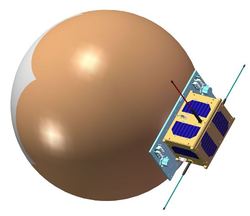 The spherical Chinese CAS-7B (BP-1B) Amateur Radio satellite carrying an FM transponder launched on July 25 at 0500 UTC. Signals from both the FM transponder and the telemetry beacon have been received. CAS-7B (BP-1B) was developed by the Chinese Amateur Satellite Group (CAMSAT) in cooperation with the Beijing Institute of Technology (BIT), and AMSAT has designated the satellite as Bit-Progress OSCAR 102 (BO-102). CAMSAT completed the project planning, design, build, and testing, and manages the satellite's on-orbit operation. BIT provided the satellite environmental testing, launch support, and financial support. Many students from BIT were involved with the project, learning about satellite technology and Amateur Radio.CAS-7B is expected to have a lifetime of about a month before reentry. The satellite was launched on Hyperbola-1 from Jiuquan into a 300 kilometer, 42.7° inclination orbit. The CW telemetry beacon transmits on 435.715 MHz; the V/U FM transponder downlink is 435.690 MHz (16 kHz passband), and the V/U FM transponder uplink is 145.900 MHz. Further information is available from
The spherical Chinese CAS-7B (BP-1B) Amateur Radio satellite carrying an FM transponder launched on July 25 at 0500 UTC. Signals from both the FM transponder and the telemetry beacon have been received. CAS-7B (BP-1B) was developed by the Chinese Amateur Satellite Group (CAMSAT) in cooperation with the Beijing Institute of Technology (BIT), and AMSAT has designated the satellite as Bit-Progress OSCAR 102 (BO-102). CAMSAT completed the project planning, design, build, and testing, and manages the satellite's on-orbit operation. BIT provided the satellite environmental testing, launch support, and financial support. Many students from BIT were involved with the project, learning about satellite technology and Amateur Radio.CAS-7B is expected to have a lifetime of about a month before reentry. The satellite was launched on Hyperbola-1 from Jiuquan into a 300 kilometer, 42.7° inclination orbit. The CW telemetry beacon transmits on 435.715 MHz; the V/U FM transponder downlink is 435.690 MHz (16 kHz passband), and the V/U FM transponder uplink is 145.900 MHz. Further information is available from  ARRL is seeking a Development Manager for full-time employment at ARRL Headquarters in Newington, Connecticut. The Development Manager is responsible for the development and implementation of strategic plans to maximize funding from donors for the organization through creative and effective campaign management and relationship building. This individual holding this position is responsible for developing and managing fundraising campaigns, building strong and successful relationships, maintaining communication with donors, and collaborating with and supervising staff to effectively execute fundraising efforts, in addition to managing individual and corporate gifts. To apply, or for more information, see the complete opening announcement on the ARRL
ARRL is seeking a Development Manager for full-time employment at ARRL Headquarters in Newington, Connecticut. The Development Manager is responsible for the development and implementation of strategic plans to maximize funding from donors for the organization through creative and effective campaign management and relationship building. This individual holding this position is responsible for developing and managing fundraising campaigns, building strong and successful relationships, maintaining communication with donors, and collaborating with and supervising staff to effectively execute fundraising efforts, in addition to managing individual and corporate gifts. To apply, or for more information, see the complete opening announcement on the ARRL .jpg) The FCC is seeking to hire an electronics engineer for a full-time, permanent position at the Commission's Enforcement Bureau, Office of Field Director in Columbia, Maryland. The incumbent resolves RF interference, educates users, enforces regulations, and investigates all services for violations. This individual serves as a point of contact for FCC licensees in matters of fixed and mobile radio direction-finding and interference resolution, and initiates Official Notices of Violation, Warnings, Notices of Apparent Liability for Forfeiture, and other orders to radio operators and licensees. A Security Clearance is required. Apply by August 26. See the
The FCC is seeking to hire an electronics engineer for a full-time, permanent position at the Commission's Enforcement Bureau, Office of Field Director in Columbia, Maryland. The incumbent resolves RF interference, educates users, enforces regulations, and investigates all services for violations. This individual serves as a point of contact for FCC licensees in matters of fixed and mobile radio direction-finding and interference resolution, and initiates Official Notices of Violation, Warnings, Notices of Apparent Liability for Forfeiture, and other orders to radio operators and licensees. A Security Clearance is required. Apply by August 26. See the 







